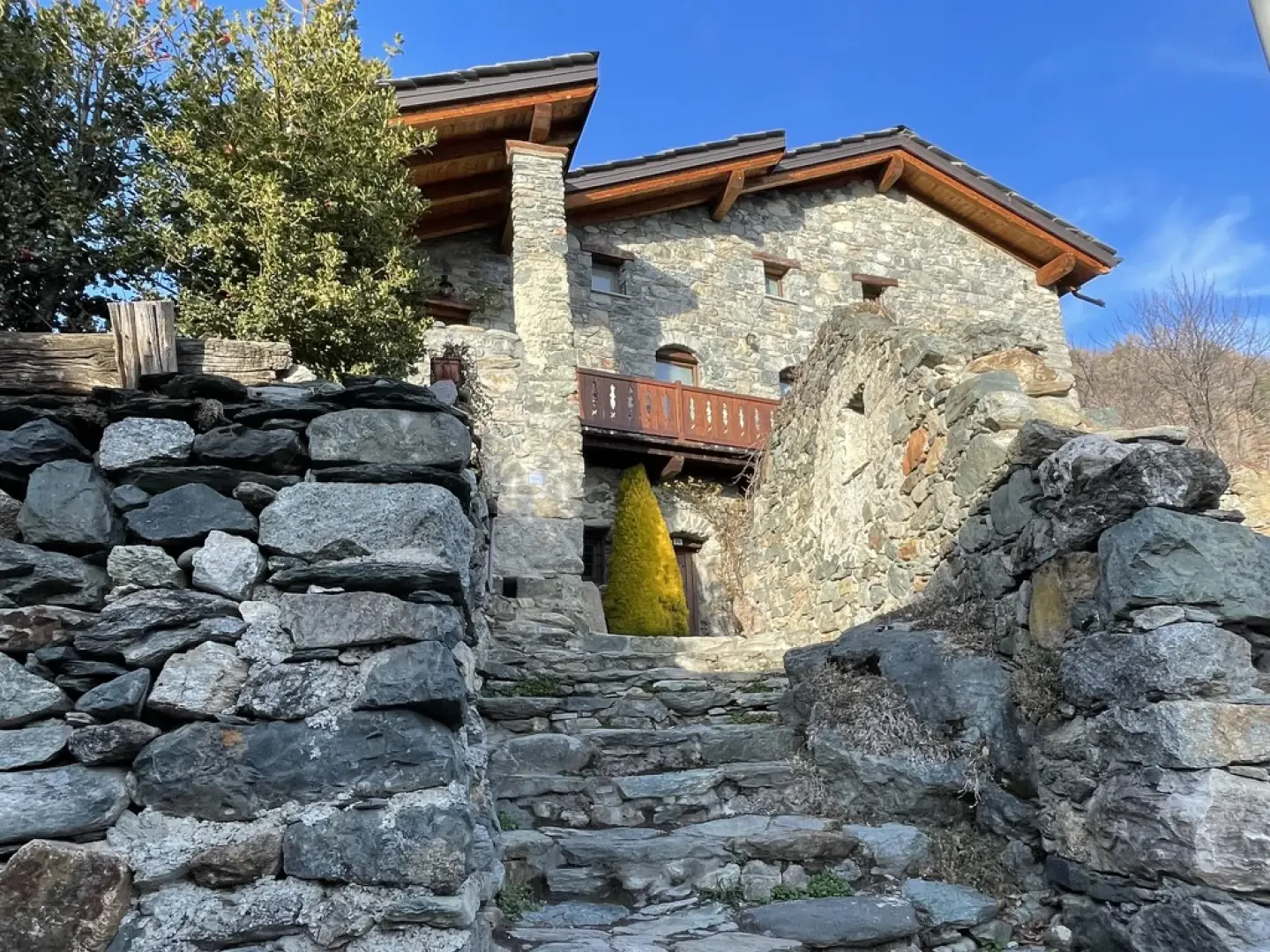Abaz

Access
Access to the village of Abaz is mainly via the regional road linking Verrès with Brusson and Champoluc: from the valley floor, past the main town of Challand-Saint-Victor, follow the signs for the villages halfway up the mountainside until you reach the turnoff for Abaz. The track, asphalted and well maintained, crosses woods and short panoramic stretches. Car parks are available near the town centre; for those travelling by public transport, the regional bus line connecting Verrès with Valle d'Ayas stops at Challand-Saint-Victor, with connections to inland villages on request in the main months. In the winter season, road conditions may vary and it is advisable to enquire in advance about road conditions.
Introduction
The village of Abaz, set in the territory of the municipality of Challand-Saint-Victor, is located in the middle of the Ayas Valley, along the course of the Evançon, in an area that for centuries has represented a natural communication route between Valtournenche and the upper valleys. The context is that of a side valley spared from the great tourist flows, where a dry climate and a sunny position, protected from the prevailing winds, are preserved, favouring a dimension of tranquillity and well-being. The landscape that welcomes Abaz is marked by ancient anthropisation, testified to by the numerous traces dating back to the Aeneolithic age that dot the area, confirming the long continuity of settlement and the strategic importance of the area for human movements along the valley.
Description
The settlement of Abaz rises a short distance from the valley floor, immersed in a mosaic of meadows, cultivated fields and broadleaf forests that heralds the proximity of the Lake Villa nature reserve, one of the most significant wetland sites in the Aosta Valley in terms of biodiversity. This village, like many others in the municipality, is characterised by its deep connection with medieval history, marked by the vicissitudes of the powerful Challant family. The presence of a favourable microclimate has always encouraged traditional farming practices and still allows the preservation of a rural fabric in which the rhythm of the seasons punctuates community life. Traditional architecture includes stone and wooden houses, community ovens, old rascards and small oratories; elements that contribute to defining the village's identity and testify to the vitality of its local customs.
Historically, life in the village was profoundly influenced by the Challant seigniory, in whose dependencies activities such as livestock farming and the cultivation of cereals, potatoes and mountain fruit developed for centuries. The inhabitants of Abaz and neighbouring villages organised agricultural work according to systems of sharing resources and labours, handing down customs of solidarity and promoting recreational moments and popular rituals that are still alive today in the patronal festivals and typical gastronomy of the area. The nature reserve of Lake Villa today represents a point of reference for hiking: the paths that start from Abaz lead to the lake, allowing visitors to explore a natural context that is home to rare species of aquatic plants, reed thickets, hygrophilous woods and a rich birdlife, offering them hints of both scientific and scenic interest. The walks allow visitors to take in not only the richness of the flora, but also wide panoramic views of the mid-valley and the surrounding mountain ridges, including the view of Mont Zerbion and the Rosa chain.
Information
- Altitude: 935m
- Name in dialect: Abà
- Inhabitants' name: abazois
- Patron Saint: St. Grato